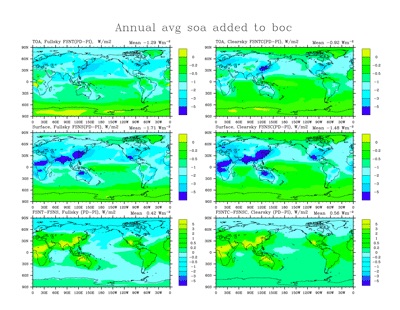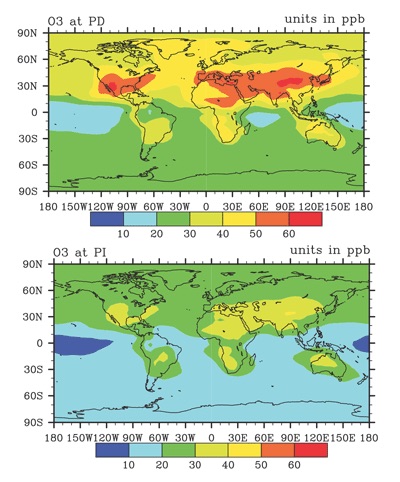Global chemical and aerosol modeling
Our group focuses on improving aerosol models of the global atmosphere. Aerosol particles both reflect and absorb solar radiation. Reflection tends to cool the atmosphere, while absorption within the atmospheric column changes the temperature lapse rate.
- Our work has shown that absorption by black carbon can lead to surface cooling or warming, depending on the altitude at which it resides (Penner et al., 2003).
- We have shown that nitrate and ammonium in aerosols is often poorly represented because the time scale for reaching equilibrium with larger particles has not been adequately accounted for (Feng and Penner, 2007).
- We have also shown that a dynamic aerosol representation of at least two modes for sulfate aerosol can greatly change the amount of black carbon within the atmospheric column and that reaches polar regions and improve the comparison with black carbon in ice cores (Wang et al., 2009).
One current project is looking at the effects of adding an improved treatment for soot, which can account for whether the soot is hydrophobic, hydrophilic or hydroscopic. Another is joining our atmospheric chemistry model and aerosol model to understand the formation of secondary organic aerosols and the gaseous precursors responsible for their formation. The amount of these aerosols formed in the atmosphere may change the amount of masking of climate (due to increased greenhouse gases) that results from the cooling by aerosols.


